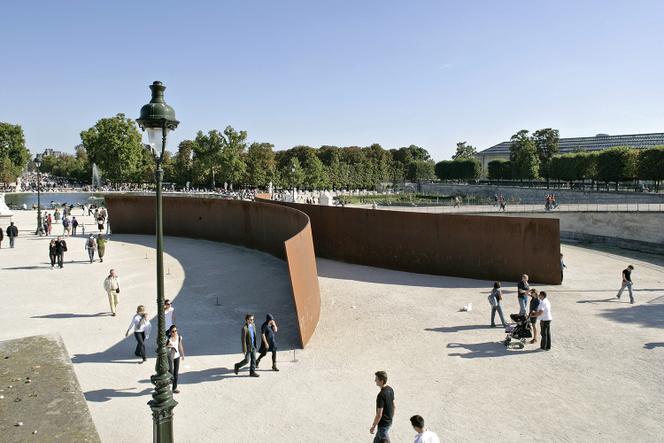


It is a tale of a great waste. For over 30 years, a steel colossus has been sleeping in a hangar owned by the City of Paris. This monumental sculpture, christened Clara-Clara, is the work of Richard Serra, a leading figure in contemporary art whose pieces are worth millions of dollars. Since the American sculptor's death on March 26, the sculpture has once again become a topic of discussion among city officials.
"What future can there be for a major sculpture like this?" Aurelien Véron, an elected member of the Groupe Changer Paris ("Change Paris group") from Les Républicains, municipal right-wing opposition, asked on X. He "officially" demanded "that the mayor's office choose an emblematic place to exhibit the work again... Parisians deserve this." The city's team did not officially respond to this post. However, the entourage of Carine Rolland, deputy mayor in charge of culture, claimed to be exploring "three possibilities in the historic heart of Paris."
While Serra may have received all the honors, including placing his Torqued Ellipses at the Guggenheim Museum in Bilbao and installing his stelae in the desert of Doha, Qatar, he never came to terms with Clara-Clara's purgatory. "Serra was particularly affected by this, as the work, which bears his wife's name, is fundamental to his artistic career," said Alfred Pacquement, former director of the Paris Musée National d'Art Moderne.
The story goes back to 1983. The Centre Pompidou decided to hold a retrospective of Serra's work. To give full expression to a body of work that radically altered the scale of sculpture, the museum commissioned Clara-Clara – two long, 36-meter curves of symmetrical, slightly inclined corten steel. Too heavy to occupy the Beaubourg forum, the sculpture was finally installed at the entrance to the Tuileries gardens, between the Musée de l'Orangerie and the Musée du Jeu de Paume, where it upset Le Nôtre's perspective. "Clara-Clara is an invitation to take a stroll that makes you see the world differently," wrote Le Monde. "It shatters certainties, displaces, off-center and off-axis, without, for that matter, destroying the site."
Jacques Toubon, then mayor of Paris' 13th arrondissement, was convinced that this major work should remain in the capital. This close friend of Jacques Chirac convinced the Town Hall to buy it. In 1985, Clara-Clara left the Tuileries for the lawn of the Square de Choisy, a popular park that had just been rehabilitated. But local residents and neighborhood associations soon took a dislike to it. Deemed ugly and cumbersome, Clara-Clara was regularly tagged. "People would even deliberately leave bags of garbage at the foot of the sculpture," said Toubon. "There came a point when it was no longer tenable." Clara-Clara disappeared into the City's reserves in 1990.
You have 50.65% of this article left to read. The rest is for subscribers only.
